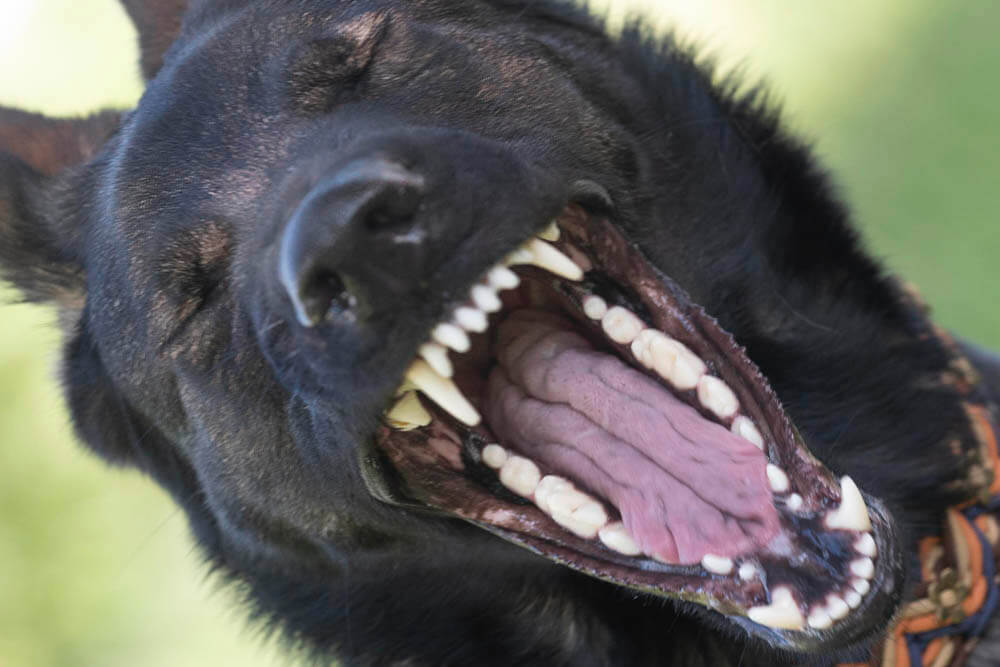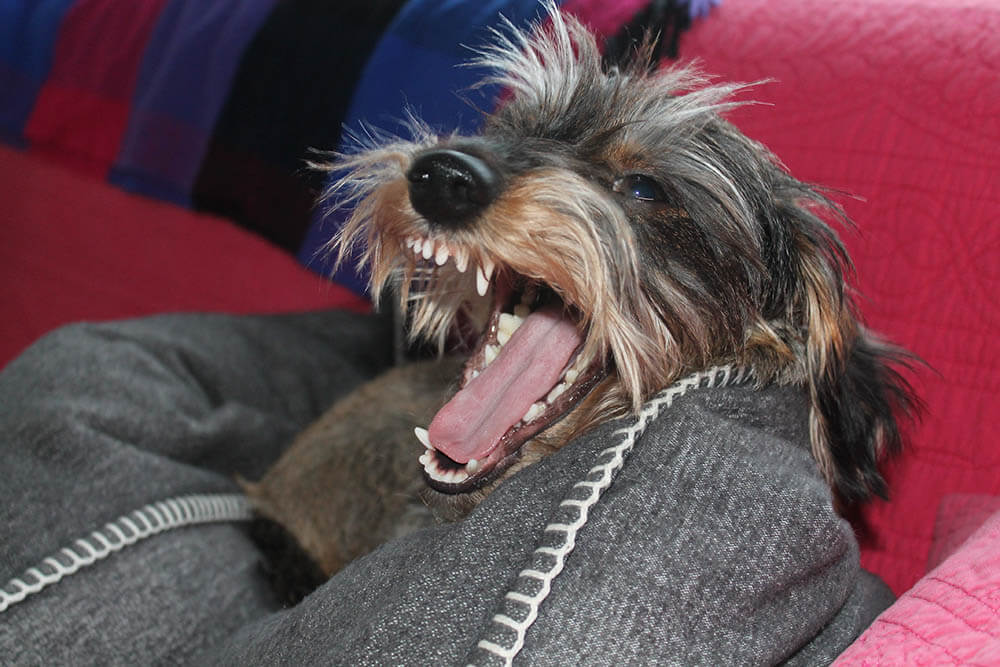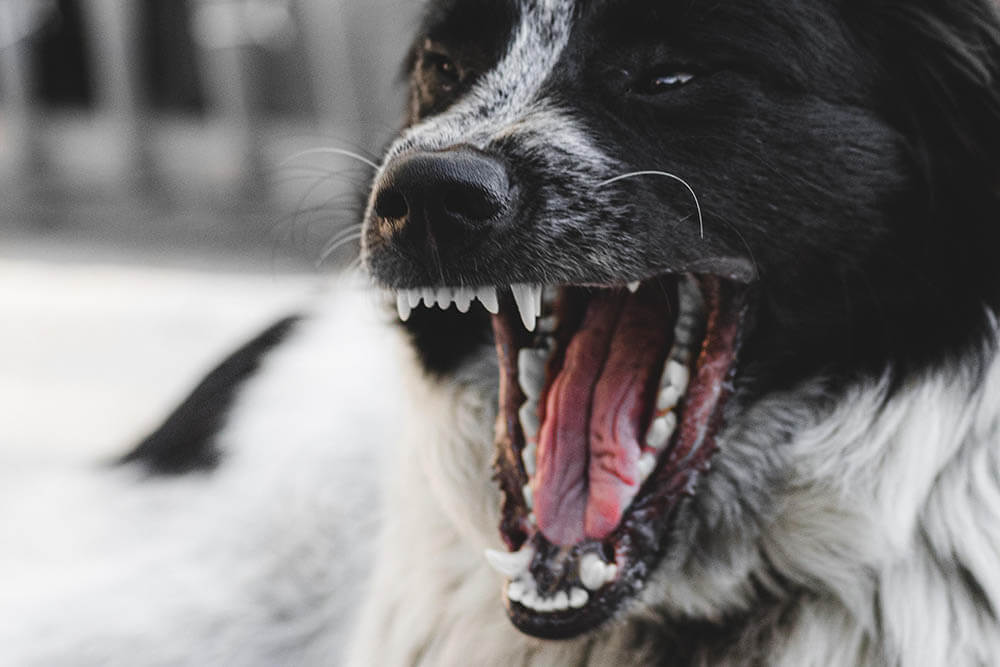Has your dog been sneezing a lot? Don’t panic. Most of the time, sneezing is a physiological reaction to irritation, not an indication that your pet is in significant danger. It may even be something completely harmless!
Of course, excessive sneezing may also mean your doggo is suffering from something less common but more serious. Therefore, it’s important to learn when sneezing is a harmless inconvenience and when it’s a symptom of a problem requiring veterinary treatment as soon as possible.
To help you determine whether or not your pooch requires immediate medical attention, we’ll be examining the various reasons why dogs sneeze. So keep reading!

The 8 Main Reasons Behind a Dog’s Excessive Sneezing
What would cause a dog to sneeze? Let’s find out!
1. Playfulness
Do you play with your dog a lot? Do you watch them play with other dogs? Then you’ve probably witnessed them sneezing dramatically during the excitement.
Lots of dogs sneeze while playing, especially when they’re having tons of fun. This type of sneeze sounds like a quick snort coming from the nose instead of the lungs.
So, what causes dogs to behave this way? Dog behavior experts believe it’s a form of dog communication. Canines use their entire bodies to “talk” to each other, so sneezing is just another way they make their emotions and intentions known.
Specifically, our canine pals use sneezing to remind their playmates that they’re just having fun and that none of their roughhousing should be taken seriously. It’s also used to calm others down if the pretend-fighting does end up causing some dogs distress.
The solution
Because sneezing as a way to communicate with others during play is often harmless, there’s no need to stop your dog from doing it.
The quickest way to tell if sneezing isn’t an issue is if your pooch only engages in the behavior during play.
If the sneezing occurs at any other time or if you observe the sneezing co-occurring with strange symptoms (such as pawing at the nose, excessive itchiness, or traces of blood coming from the nostrils), then it may be a sign of a problem. Non-stop sneezing is also a hint that something’s wrong. Seek veterinary assistance if you observe such issues in your pet.
2. Airborne irritants
When inhaled, airborne substances can irritate a dog’s nasal passageways, causing a sneezing fit.
The canine nose is highly sensitive. Pollen, dust, air fresheners, cleaning products, hairspray, diffusers, candles, smoke, and even strong perfume can all irritate your pet’s snoot and make them sneeze.
The solution
Assess your dog’s surroundings and identify the usual culprits behind their nasal irritation. Then, avoid exposing your dog to the substances that are most likely to cause them issues.
If you’re going to use aerosols or other spray products, ensure you move your dog to a different room first. If you have to smoke, do it where your dog can’t inhale the smoke. Such actions will separate your dog from potential irritants, thereby preventing nasal irritation.
Most importantly, keep your house clean. Never let dust or any other potential irritants accumulate on any surface.

3. Foreign particles
Dogs have an incredible sense of smell that they use to explore their environment. Unfortunately, this also makes it easier for things to get stuck in their nostrils.
In the process of sniffing around, your doggy’s nose may pick up foreign particles such as leaves, blades of grass, sharp grass seeds, foxtail burrs, hair, or food. These can then get stuck in the nostrils to cause severe irritation, so your pet sneezes as their body attempts to get rid of these unwelcome particles. The sneezing won’t stop until said particles have been removed.
In addition to their frequent sneezing, is your dog rubbing their nose on the ground? Are they pawing at it? Are they sneezing blood? These are all signs something could be lodged in their nose.
Take note that an overly curious dog is more susceptible to this concern, as they’re more likely to smell everything they come across.
The solution
If you suspect something your dog has inhaled has gotten stuck in their nasal cavity, we recommend taking them to the animal clinic or hospital as soon as possible. A veterinarian can assess the situation, then remove the offending particle before it’s driven deeper into their nose.
After taking your dog for a walk, it’s a good habit to check their body, particularly the inside of their nose, for foreign particles. If possible, remove any particles you find so your pooch doesn’t inhale them. As a walk in the countryside is more likely to expose your pet to grass seeds and other particles, be especially diligent with such checks if you live near nature.
4. Allergies
Like people, our canine friends can experience allergic reactions to various allergy-causing substances in the environment, such as pollen, dust, and mold. Consuming certain foods and being bitten by insects such as fleas can also trigger an allergic response in a dog.
The three main types of allergies include skin allergies (which are caused by environmental allergens, food consumed, or flea bites), food allergies, and the much rarer acute allergies.
An acute allergy is a severe allergic response. It can occur after a bee sting, the administration of a vaccine or drug, or exposure to any kind of allergen. This issue can cause anaphylactic shock in a dog, which can be fatal without immediate treatment.
On top of sneezing, an allergic reaction may cause:
- Itchiness
- Itchy ears
- Coughing
- Wheezing
- Hives
- Red, inflamed skin
- Swollen face, lips, eyelids, or earflaps
- Vomiting
- Diarrhea
- Runny, itchy eyes
- Runny nose
- Chronic ear infections
- Constant licking
- Constant scratching
The severity of an allergic response depends on your dog’s allergen tolerance. One dog, for example, may experience mild itching only. Another, however, could have itching so extreme that their constant scratching could lead to skin damage, wounds, and infection.
The solution
To treat an allergy, avoid exposing your dog to allergens. So if your pet started sneezing after inhaling moldy bread, throw away that bread.
Of course, preventing exposure to allergens isn’t always possible, and there are times it’s difficult to determine what exactly your pooch is allergic to. Some situations require a more active approach, such as killing the fleas that are harassing your doggo.
Whether or not your dog’s allergies are severe, it’s a good idea to bring them to an animal hospital or clinic. A veterinarian can prescribe allergy relief medication (such as antihistamines) and even help figure out what substances are triggering their allergic response.

5. Nasal mites
Nasal mites are tiny bugs that, once inhaled, can stay in your dog’s nasal cavity to cause inflammation and irritation.
These pesky insects can often be found in the dirt, so a dog that likes to rub their nose in or dig the soil are at greater risk of getting nasal mites.
Nasal mites can cause sneezing as well as other symptoms, such as:
- Noisy, heavy breathing
- Reverse sneezing
- Thick or bloody nasal discharge
The solution
Bring your dog to the vet for treatment if you suspect they have nasal mites. A veterinarian can use general parasite medication to get rid of these bugs. Flushing your doggo’s nose is also an option.
6. Nasal Infection
Sneezing can be a symptom of upper respiratory infections caused by bacteria or fungi.
Other symptoms of such infections include:
- Bloody nasal discharge
- Coughing
- Lack of appetite
- Nasal discharge
- Nosebleeds
- Nose pain
- Post-nasal drip
- Swelling
Among the most common causes of nasal infection is the inhalation of the aspergillus fungus from dust, bits of grass, or hay.
Even dental problems such as dental cavities and gum abscesses can cause nasal infections and thus frequent sneezing. For instance, as some teeth are close to the nasal passages, infections in specific teeth can migrate to the nose.
The solution
To treat nasal infections, take your dog to the veterinarian, who can prescribe medications such as antibiotics. Various drugs can reduce the symptoms and ultimately eliminate the problem.

7. Canine influenza virus
Also known as dog flu, canine influenza virus is a canine respiratory disease whose culprits are Type A influenza viruses that specifically infect dogs. Two distinct types of canine influenza viruses exist: the H3N2 virus and the H3N8 virus.
The canine influenza virus is highly contagious as it can spread through contact with a contaminated surface, infected dog, or airborne droplets.
In addition to sneezing, this disease can cause the following symptoms:
- Coughing
- Difficulty breathing
- Fever
- Lethargy
- Nasal discharge
- Runny eyes
The solution
While mild canine flu can resolve on its own, we recommend taking your dog to the vet for faster relief.
If your dog’s symptoms are causing them great distress or if the symptoms grow severe, you should rush them to the vet. A few cases of canine flu can evolve into pneumonia, which is more life-threatening.
8. Nasal tumor
Frequent sneezing can be caused by a tumor that’s grown in a dog’s nasal cavity. And the bigger the tumor gets, the worse the sneezing becomes.
Thankfully, nasal tumors are quite rare and are more likely to occur in senior dogs.
A nasal tumor can also cause the following symptoms:
- Blood from the nostrils
- Coughing
- Lack of energy
- Loud breathing
- Nasal discharge
- Weight loss
- Wheezing
The solution
Take your dog to the veterinarian if they show signs of a nasal tumor.
Treatment depends on the tumor’s type and location. In most cases, veterinarians can surgically remove the tumor. However, chemotherapy, radiation therapy, or other similar treatments are also effective at halting the progression of the disease.
Reverse Sneezing in Dogs Defined
Reverse sneezing is a reflex action that makes a dog exhibit a sudden, sharp inhalation of air through their nose to produce a honking or snorting sound. Because it can last for half a minute and makes the animal look like they’re having difficulty breathing, it can be quite frightening to witness. Thankfully, while reverse sneezing may cause your dog discomfort, it’s usually no cause for alarm.
This strange phenomenon is often a response to irritants, inflammation, or excitement. For example, if something is lodged in your dog’s mouth, reverse sneezing can help remove it. It can also get rid of any substance that’s causing irritation or discomfort.
Reverse sneezing is more common in overweight dogs and dogs with a flat or smaller face.
If you want to resolve this behavior, it helps to pet your pooch and do other things that can calm them down. Consult a veterinarian if your dog has repeated episodes of reverse sneezing.

Conclusion
Dogs sneeze for various reasons. Most of the time, it’s normal behavior that’s meant to communicate information or diffuse tension during playtime. At other times, it could be a sign of a health problem, such as an allergy, the inhalation of airborne irritants or foreign particles, the presence of nasal mites, a nasal infection, a nasal tumor, or the canine influenza virus.
If your dog only sneezes during playtime, then you don’t have to worry; they’re only doing what’s natural to canines and are unlikely to be in any sort of trouble. If this sneezing is excessive, occurs outside playtime, and/or is accompanied by strange behaviors and symptoms of health issues, then the best course of action is to seek veterinary aid. So if your pooch starts coughing, bleeding from the nose, or excessively scratching themselves, it’s time to contact an animal clinic or hospital.
Thankfully, most serious health issues that cause sneezing are rare. Nevertheless, we recommend familiarizing yourself with the symptoms of such health concerns so you’ll be able to tell when sneezing is a sign your pet needs help.
